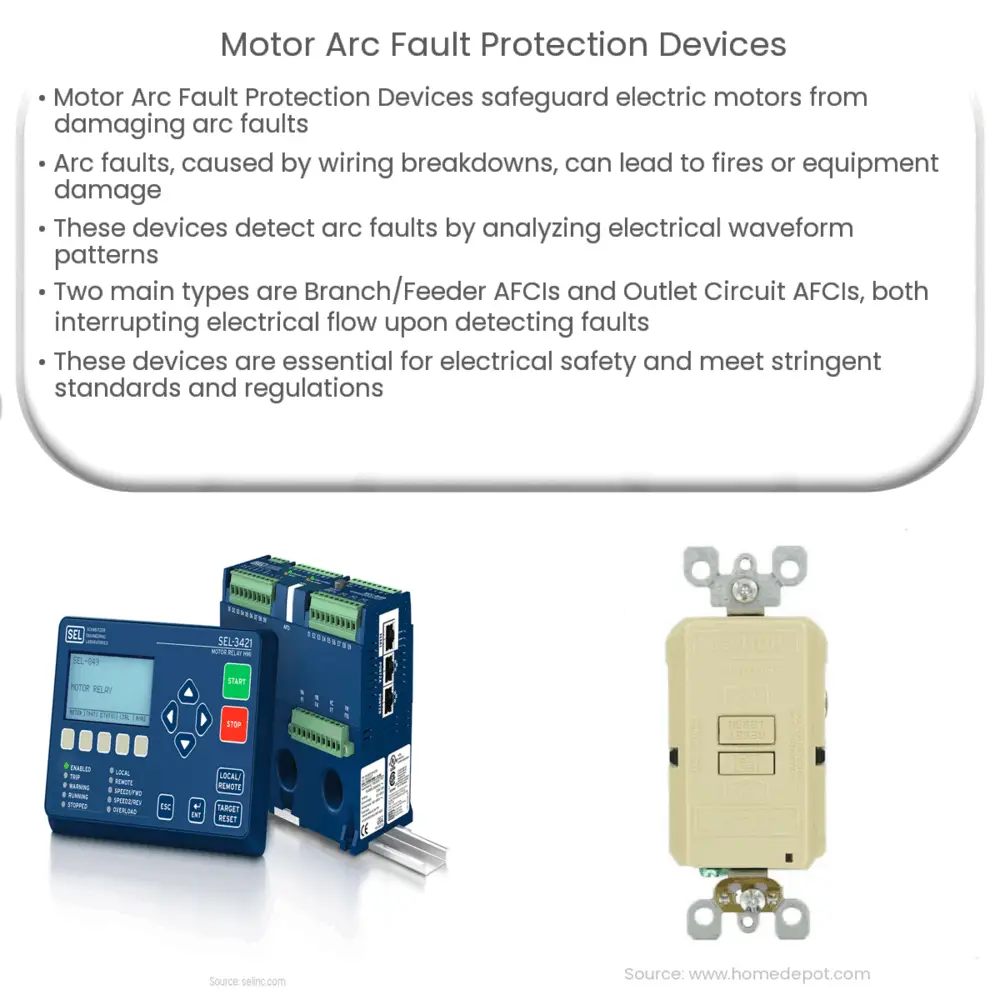Explore the importance of Motor Arc Fault Protection Devices in ensuring electrical safety, their operation, types, and future prospects.

Introduction to Motor Arc Fault Protection Devices
Modern industrial and commercial environments rely heavily on electric motors for a wide range of applications. The safety and efficiency of these motors are of paramount importance, and this is where Motor Arc Fault Protection Devices come into play. These devices are designed to safeguard electric motors and the circuits that power them from the damaging effects of arc faults.
Understanding Arc Faults
An arc fault is a type of electrical malfunction that occurs when a high-powered electric discharge, or arc, is initiated by a breakdown in the insulation of wiring, often due to damage, age, or improper installation. This discharge can generate intense heat, resulting in a fire hazard, equipment damage, or even physical harm to individuals nearby.
The Role of Motor Arc Fault Protection Devices
Motor Arc Fault Protection Devices are specifically engineered to detect these potentially dangerous arc faults. They function by monitoring the electrical waveform patterns in a circuit. Under normal conditions, these patterns follow a predictable path. However, when an arc fault occurs, it disrupts this path, creating irregularities that these devices are tuned to recognize.
Types of Motor Arc Fault Protection Devices
These are designed to protect the wiring of entire circuits. They are installed in the electrical panel and monitor the entire circuit for signs of arc faults. Once detected, they immediately interrupt the electrical flow, mitigating the risk of fire or damage.
These are installed at the outlet and provide protection for the plugged-in device and the immediate circuit. They operate by detecting changes in current flow and, like their branch/feeder counterparts, will interrupt the flow of electricity upon detecting an arc fault.
Importance of Motor Arc Fault Protection Devices
The role of these devices in maintaining the safety and operational reliability of electric motors cannot be overstated. By promptly detecting and reacting to arc faults, they significantly reduce the risk of catastrophic equipment failures, fires, and injuries.
Moreover, these devices also help to minimize costly downtime and repairs, ensuring that motors continue to operate efficiently and reliably. This is particularly important in industrial settings where even a brief interruption can have a substantial impact on productivity.
The Science Behind Motor Arc Fault Protection
The technology that powers Motor Arc Fault Protection Devices is grounded in the science of electrical engineering. These devices employ advanced algorithms to accurately detect the unique electrical signatures associated with arc faults. This ability to distinguish between normal operational conditions and potentially dangerous arc faults is a critical aspect of their functionality.
The Challenges and Solutions in Detecting Arc Faults
Detecting arc faults is not an easy task. They can be intermittent, brief, and their electrical signatures can often mimic normal operational conditions. However, Motor Arc Fault Protection Devices are equipped with advanced technology that can effectively distinguish between these scenarios.
These devices utilize complex algorithms to analyze the waveform patterns in a circuit. They are designed to discern the subtle differences between a harmless electrical event and a potentially catastrophic arc fault. The sophistication of this technology is continuously evolving, ensuring increased reliability and precision in arc fault detection.
Regulations and Standards
Given the importance of these devices in ensuring electrical safety, they are subject to stringent standards and regulations. In many countries, the installation of Arc Fault Circuit Interrupters is mandated by electrical codes for new constructions and major renovations. These regulations are in place to ensure the safety of individuals and the protection of property from electrical fires and related incidents.
Future of Motor Arc Fault Protection Devices
The future of Motor Arc Fault Protection Devices looks promising. With advancements in technology and increased awareness of electrical safety, the demand for these devices is expected to grow. As they become more advanced, these devices will likely become more effective at detecting and preventing arc faults, further enhancing electrical safety in both residential and industrial settings.
Conclusion
In conclusion, Motor Arc Fault Protection Devices play an indispensable role in promoting electrical safety and preventing equipment damage. Their ability to detect and interrupt arc faults ensures the protection of electric motors and the circuits that power them, making them an essential component of any electrical system.
With continuous advancements in technology and stringent regulatory standards, these devices will continue to evolve, offering improved protection against the potential hazards of arc faults. Their significant contribution to electrical safety makes them a worthy investment for anyone seeking to safeguard their electrical infrastructure and maintain the efficiency and longevity of their electric motors.

